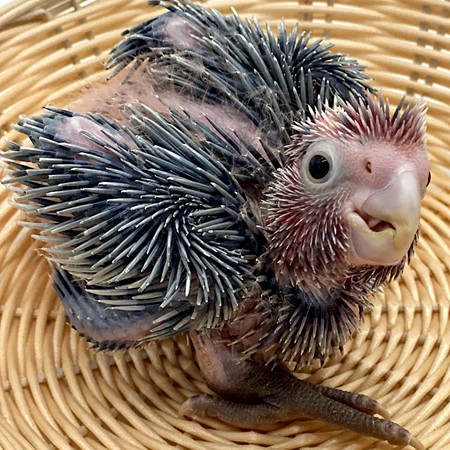

Components of both our inertial reorientation and aerodynamic torque estimates correlated, significantly, with asymmetries in the activation profile of four flight muscles: the pectoralis, supracoracoideus, biceps brachii and extensor metacarpi radialis (r(2) from 0.27 to 0.45, P<0.005). Black Face Pastel 50 Black Face Black Breasted 18 Black Face Black Cheek 35 Triple Black. 5000 Wholesale inquiries from qualified shops/resellers. Our estimates of inertial reorientation were statistically significant predictors of the measured reorientation within wingbeats (r(2) from 0.2 to 0.37, P<0.0005). 5,000 Rosebreasted Cockatoo baby macawnut1 Wellington, Florida Birds, Cockatoos Adorable Rosebreasted cockatoo baby on 4 feedings. Non-dimensional roll damping coefficients of approximately -1.5, 2-6 times greater than those typical of airplane flight dynamics (approximately -0.45), were required to bring our estimates of reorientation due to aerodynamic torque back into conjunction with the measured changes in orientation. The estimated torque from the model was a significant predictor of roll acceleration (r(2)=0.55, P<0.00001), but greatly overestimated roll magnitude when applied with no roll damping. The blade-element model successfully predicted weight support (predicted was 88+/-17% of observed, N=6) and centripetal force (predicted was 79+/-29% of observed, N=6) for the maneuvering cockatoos and provided a reasonable estimate of mechanical power. Using three-dimensional kinematics recorded from six cockatoos making a 90 degrees turn in a flight corridor, we developed predictions of inertial and aerodynamic reorientation from estimates of wing moments of inertia and flapping arcs, and a blade-element aerodynamic model. We found evidence that both these modes play important roles in the low speed turning flight of the rose-breasted cockatoo Eolophus roseicapillus. The reconfigurable, flapping wings of birds allow for both inertial and aerodynamic modes of reorientation.


 0 kommentar(er)
0 kommentar(er)
